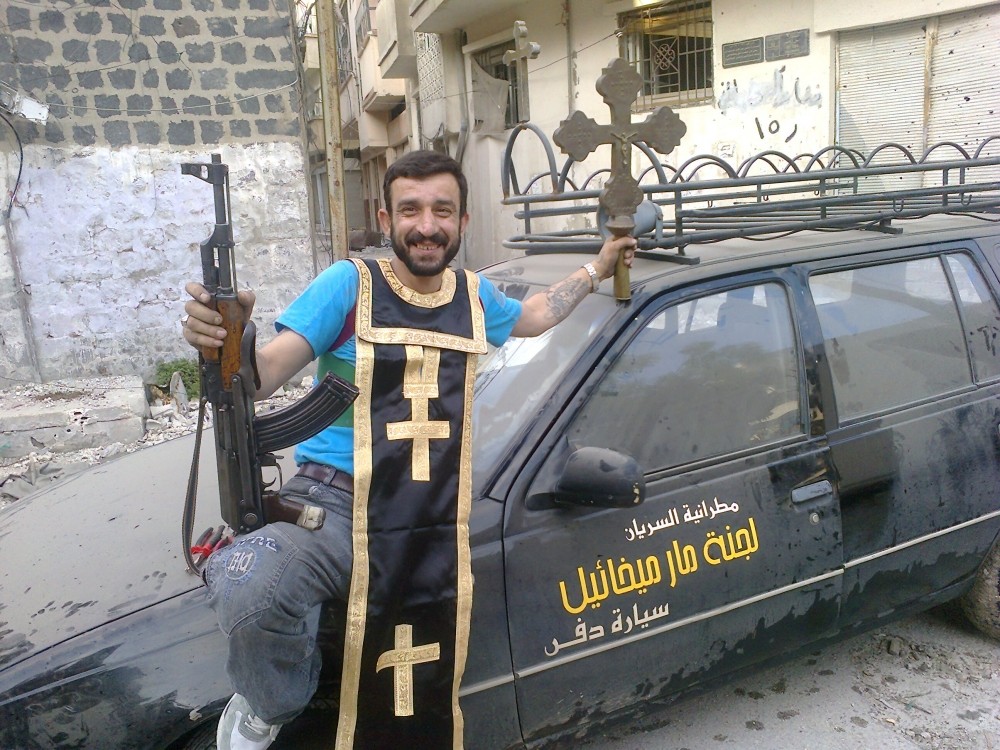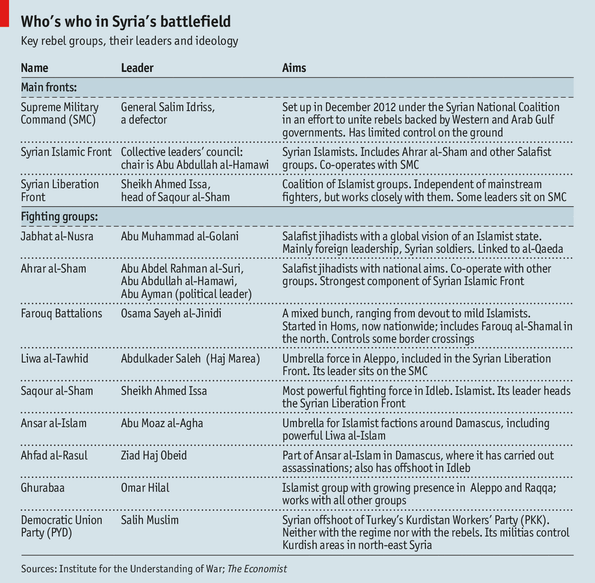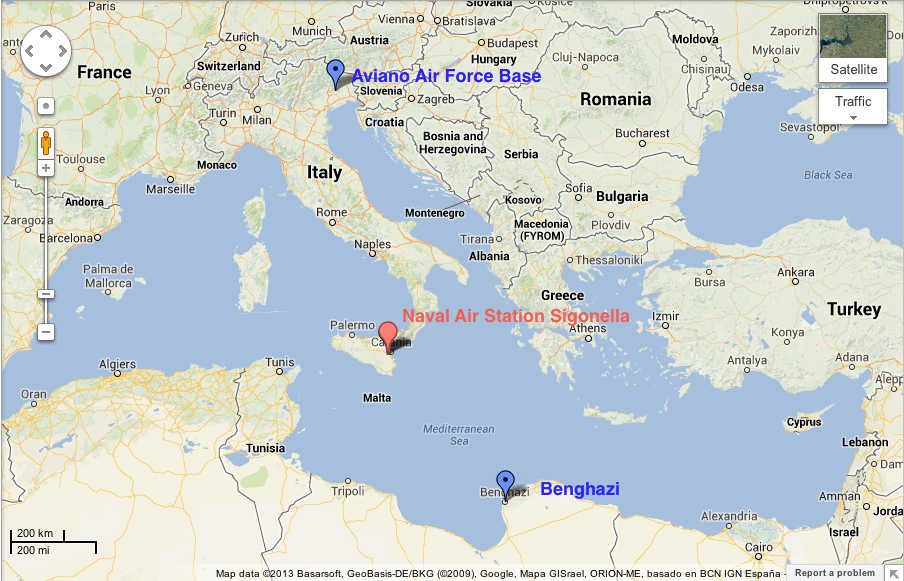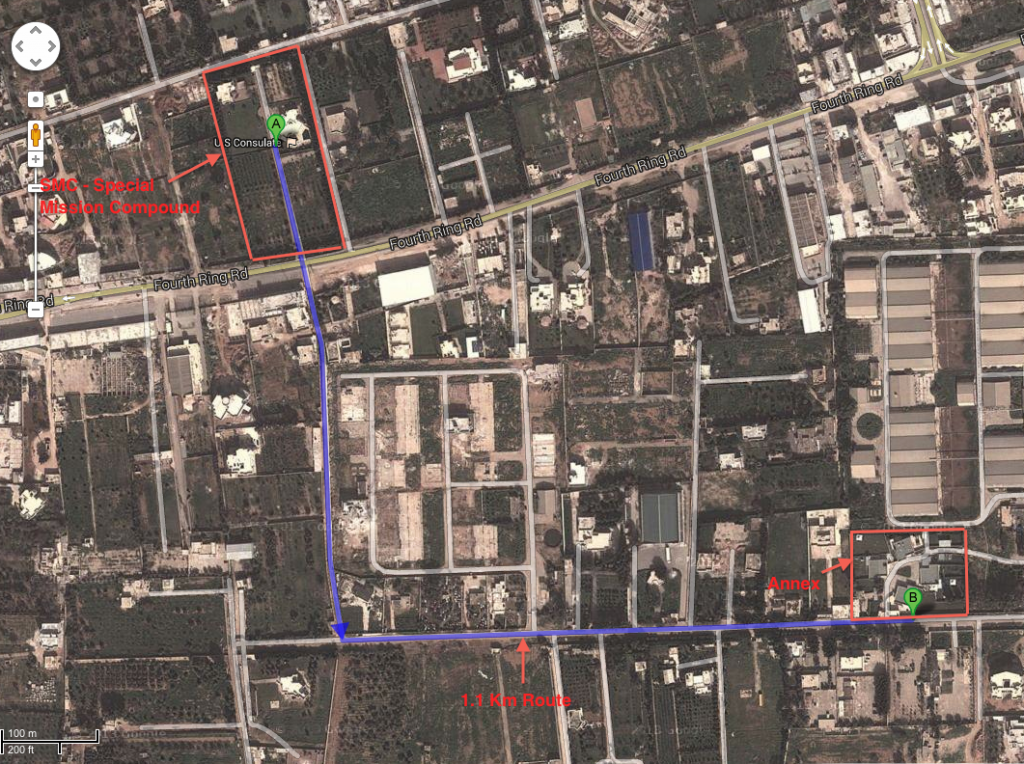Syrian President Bashar al-Assad is not a nice guy. His government is responsible for long term oppression and horrendous human rights abuses toward those that oppose his regime domestically.
That said, the Free Syrian Army (FSA) or ‘rebels’ are not the band of liberty loving freedom fighters Western media has been jamming down our throats. Indeed, this fragmented umbrella of groups is dominated by the same radical Islamists that we’ve seen operating in Libya. These groups are motivated by a hatred of Assad’s secular regime and by a burning desire to implement Sharia law in Syria. Most of these fighters are not Syrian natives and the civilian population in Syria, for the most part, does not support the FSA in the civil war.
Let’s take a quick look at Syria over the last 10 or 15 years in the lead up to the ongoing civil war and then take a good hard look at which groups are represented within the FSA and some of the atrocities they’ve committed.
A Brief History of Recent Events in Syria
In 2000 Hajez Assad, then President of Syria died and his son, Bashar, took over as head of the Ba’ath party, the President and head of the military. These positions were pretty much a package deal since the Syrian constitution at that time stipulated that only Ba’ath party leaders could ascend to the Presidency.
Under the younger Assad, the general authoritarian flavour of the Syrian government, though slightly relaxed, pretty much continued as it had in the past. There was still a large secret police force (the mukhabaraat) and people had no expectation of privacy or basic rights to assembly or protest the government. Dissenters continued to be disappeared or be otherwise intimidated into submission. In short, Syria was run much like other dictatorships in the region.
But, for all its obvious flaws, there are a few things to recognize about Bashar Assad’s regime. First, and entrenched in the Syrian constitution, is the fact that Syria’s government is secular. This is very important because the 23 million people calling Syria home are not homogenous in any sense of the word. Here’s a rough breakdown of the Syrian population:
- Sunni: 64%
- Shiite: 13% (vast majority Alawites)
- Kurds: 10%
- Christians: 12%
- Jews and Other Small Groups: 1%
While the Sunnis are will represented in every aspect of Syrian government and industry, they do not have the same stranglehold on the reigns of power as has been seen in other Sunni dominated countries (Iraq being a good example). Indeed, the Assad family itself is Alawite. By and large religious discrimination was not the norm and, in keeping with the constitution, there were equal rights and opportunity for all including equal opportunity and pay for women. Thus people of different religions were free to pursue whatever occupation or government positions they desired.
‘Arab Spring’ Comes to Syria
In March and April of 2011 the ‘Arab Spring’ movement that had whipped through the Middle East arrived in Syria in the form of popular protests calling for an end to Ba’ath party rule and the ouster of President Assad. These protests, for the most part, cut across the religious boundaries and amounted to a true grass-roots movement for democracy.
Things quickly boiled over with Assad seeking to clamp down on protestors throughout the country. Estimates vary but at least several hundred protestors were killed in the first few months of protest in addition to many thousands of arrests. There’s no two ways about it: This was authoritarian rule at its worst.
In June 2011 Assad held out an olive branch to protestors by agreeing to reform Syria’s constitution ending the one-party Ba’ath rule and limiting Presidents to at most two seven year terms. Additionally Assad promised amnesty for protestors and a national dialog toward greater freedoms.
But it was too little, too late. As government atrocities continued to mount, members of Syria’s military started to defect and join the opposition. By the end of July a group of defected officers announced the formation of the Free Syrian Army (FSA) dedicated to the removal of Assad through civil war.
A Movement Co-opted
Through the later part of 2011 the FSA was a largely popular, secular resistance force. That is not to say that atrocities weren’t being committed (by both sides) but, by and large, the conflict was a civil war in the traditional sense.
Then, starting in January 2012, the Islamic fundamentalists (jihadies) started to arrive. At first it was dribs and drabs but then large numbers of well armed and seasoned veterans started to infiltrate the ranks of the FSA. Large units of the original FSA, chronically short of weapons and ammunition, soon joined the ranks of the jihadies out of necessity. The character of the rebel forces was altered – and not for the better.
Today, of the nine major groups operating under the umbrella of the FSA, seven are Islamic fundamentalist. The Economist has a good chart showing the current breakdown of the FSA:
Widely recognized as the most effective combat unit is Al-Nusra. These are seriously hard-core Sunni fundamentalist who have publicly pledged allegiance to Al-Qaeda. They strive to overthrow Assad and establish a pan-Islamic state under Sharia law. Most of the other Islamic fundamentalist groups have similar aims – all wish to see Sharia law established in Syria.
Not only are these groups Islamic fundamentalist but additionally their members and leadership are hard-core jihadies – completely extremist and brutal in the worst possible sense of the word.
Direct From the Horses Mouth
But don’t take my word for it. The rebel leaders are openly pledging their allegiance to Al-Qaeda. Even the U.S. State Department was forced to designate the main Islamist group, Al-Nusra, as a terrorist organization with close ties to Al Qaeda. Yet rebel groups across Syria have pledged their support for Al-Nusra and this organization continues to establish itself as the most effective military force under the FSA umbrella.
Then there’s this little gem of the FSA signing a heartwarming song which if you didn’t know the lyrics could be mistaken for the Islamic version of Kumbaya. Here are the actual lyrics in english:
If they call me a ‘terrorist’, I would say: ‘It is an honor for me’ Our terror is praised, with a divine calling
Our leader, the Mullah (Omar), did not forsake his religion All the soldiers have sold their souls to Allah
Our leader bin Laden, America’s worst nightmare
With the power of faith and our weaponsWe destroyed America with a civilian plane
The World Trade Centre was turned into a pile of rubble
Touching.
David Enders (who was subsequently kidnapped for a short time by Al-Nusra) wrote an interesting article in which he interviewed a local Al-Nusra leader in Syria, Iyad al Sheikh Mahmoud. Apparently Mahmoud didn’t feel that once Assad was ousted there would be any need to elections since “Eighty percent of Syrians want Islamic law“.
Here are some of the many other instances of Syrian rebels exposing their true ideologies:
- Rebels chanting their allegiance to Osama Bin Laden.
- There is one unit in the FSA which calls itself the ‘Osama Bin Laden Brigade’. Here’s a video of that group attacking a government checkpoint. Decide for yourself if these are secular freedom fighters or jihadies.
- A warning from an FSA fighter to the West: “…I just want to send a short message to America and all the infidel countries of the west – We started our Jihad (holy war) here on Sham (the Levant) soil, and we won’t finish except on your land, our Jihad started here & in Allah’s will our Jihad won’t finish except on your land & this banner in Allah’s name will be raised on the White House“.
Actions Speak Louder Than Words
Actions do speak louder than words. With that in mind allow me to call attention to a small fragment of the documented atrocities that have been committed by rebel forces. A word of warning – some of this content is unbelievable graphic. To be honest I had to stop building out this section of the blog post because it was too disturbing to troll through all these youtube videos. Nevertheless it’s important for people to be aware of what’s really going on.
- Beheading of a bound individual.
- Forcing civilians to be suicide bombers.
- Another beheading.
- Public execution of a 14 year old boy for insulting the Prophet Mohammed.
- Fatwas issued by Islamic clerics legitimizing rape of non-Sunni civilians.
Independent Assessments
There are people with first hand knowledge of the situation in Syria who remain at arms length and have no obvious bias. The observations of these people supports the idea that the rebellion in Syria has degenerated from a secular civil war to a jihad being waged by Islamic fundamentalists.
One great example is a French surgeon who worked at a hospital in Aleppo for Doctors Without Borders. Jacques Bérès, when asked if the fighters he treated were extremists stated:
I would say at least half of them are Salafist Jihadists with the headband with Quranic verses, even the cars transporting them had Al-Qaeda flags on them, and the Salafist look with the mustache gone while keeping a beard. …the goal of the militants is to impose sharia law and a global caliphate over Syria and the whole region.
You can see the entire interview here.
Persecution of Christians
Syria is home to some of the oldest Christian communities in the world – some going back as far as two millennium. Or rather Syria used to be home to some of the oldest Christian communities in the world.
Estimates vary but according the U.N there are currently about 1.5 million Syrian refugees in addition to over 4 million internally displaced people. Specific estimates for the number of Christians affected is hard to come by but it’s easily in the hundreds of thousands. In just the town of Homs between sixty and seventy thousand Christians were forced to flee ahead of the rebel occupation.
And they flee with good reason. There have been many documented instances of atrocities against Christians:
- Christians beheaded and feed to wild dogs.
- Priests abducted and brutally tortured before being killed.
- Numerous documented church desecrations.
- Entire Christian villages being massacred.
Persecution of Shiite Alawites
Like the Christians, the minority Alawites are a target of brutal atrocities that could be called genocide. Indeed, FSA leaders have openly tied the loss of strategic cities to the wholesale slaughter of Alawites in areas they retain control of:
“I am telling them, if Al-Qusair falls, then Shia villages in Syria will be wiped off the map. The same applies to Alawite villages. We don’t wish this thing at all, but it will be something out of control.”
“Who would be able to control and restrain thousands of fighters full of spirit of revenge? Who would be able to control all those people?”
Even if one takes this in the most generous light possible this amounts to an admission by FSA commanders that they are not in the control of the jihadies comprising their main fighting force and further that these jihadies will initiate wholesale massacres as revenge for any defeats.
Then there’s this story which surfaced a few weeks ago of an influential FSA commander removing and taking a bite out of the heart of a fallen Syrian government soldier. The commander goes on to issue a direct threat to do the same to all Alawites and infidels.
Use of Child Soldiers
New York based Human Rights Watch released a report late last year documenting the wide-spread use of child soldiers by FSA forces. The rebels don’t try and hide this fact – indeed they seem proud of it. Here’s Abdel Razzaq, a 38-year-old former regime army sergeant who defected to the opposition and now trains child soldiers at a rebel camp in the Syrian town of Tlaleen:
When they arrive here, they are children. By the time they leave, they are killing machines. Children are the best soldiers I know. They obey every command. An adult asks questions and answers back. But the children, they question nothing.
There’s a myriad of additional evidence on the use of child soldiers (even their involvement in summary executions of government soldiers) which I won’t go into. If you want to look into it further, this youtube video documenting child soldiers in Syria fighting with the FSA is a good jumping off point as well as the above linked Human Rights Watch report.
Conclusion
Bashar al-Assad is a brutal dictator whose forces are responsible for both long term oppression of the Syrian people and many egregious atrocities during the present civil war.
But the FSA is clearly the greater of two evils. What began as a legitimate uprising by the people has been thoroughly co-opted and dominated by foreign Islamic extremists bent on imposing Sharia law and genocide for all infidels.
This being the case it’s simply unfathomable to me that the West has, by and large, decided to back and arm the FSA. It is now U.S. policy to supply armaments to the FSA (they’ve been doing this covertly for a long time).
The outcome of this foreign entanglement is entirely predictable: Yet another failed state in the Middle East taken over by extremist elements. It seems our political leaders are determined to leave a trail of destruction throughout the Middle East and will not rest until they’ve succeeded in destabilizing the entire region.
Citizens of governments supporting the FSA have a moral obligation to speak out against the use of their tax dollars to fund rebel forces in Syria. As long as our governments continue to fund these extremists we’re all partially responsible for their actions. I for one don’t want anything to do with these jihadies.
A final note of caution: We in the West will pay a high price for the recent campaigns which have destabilized Libya and Syria. We have turned these countries into breeding grounds for exactly the kinds of terrorists our liberties are being systematically eroded to protect us against. This will blow back on us. We will reap what we sow.




